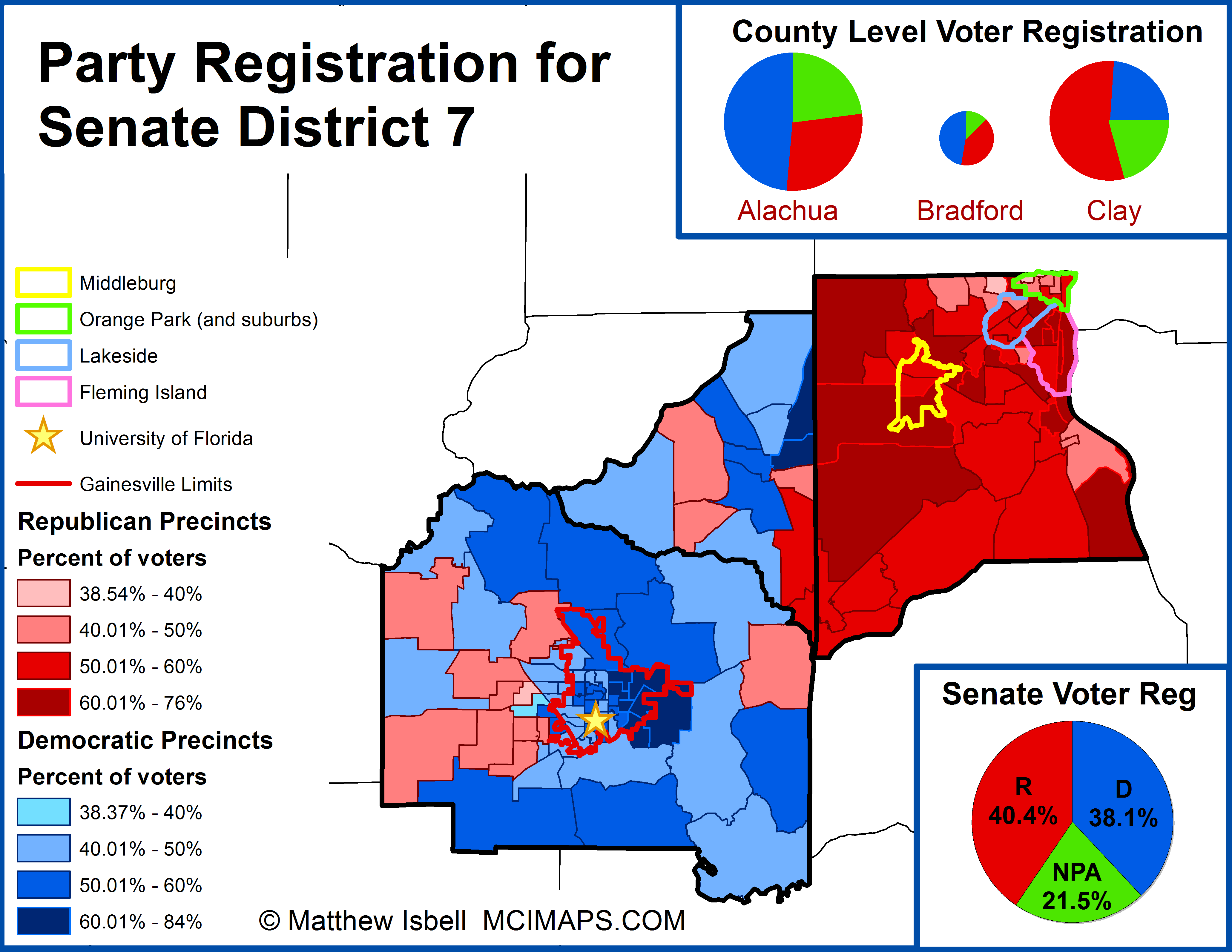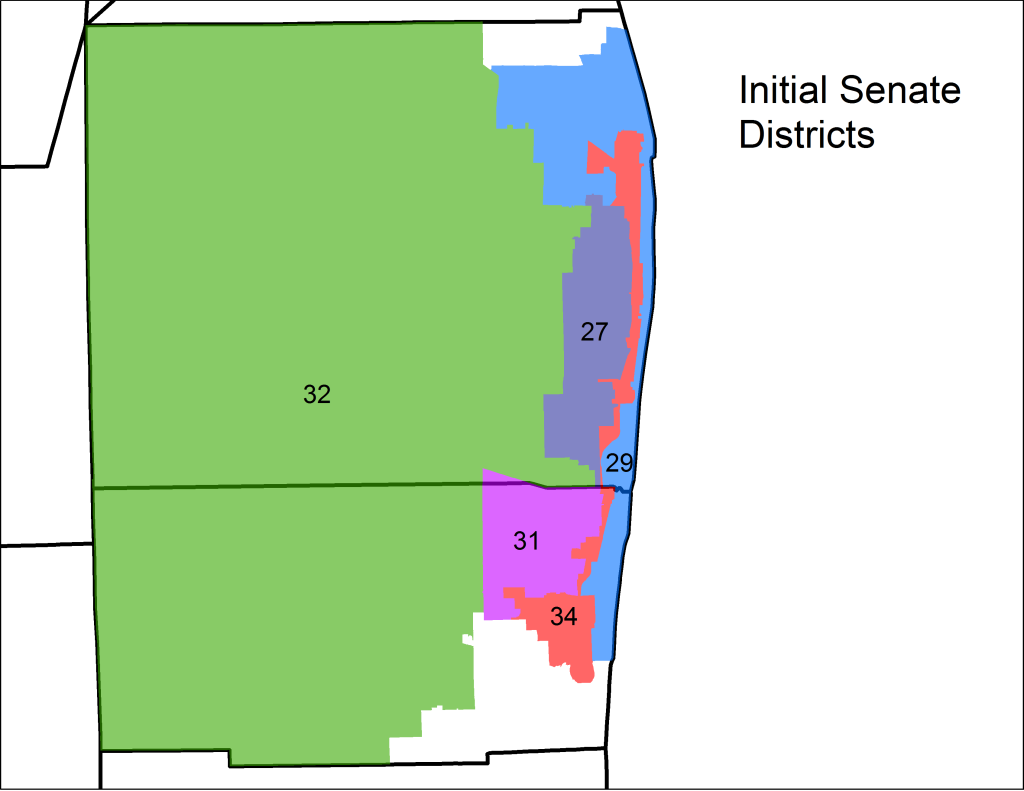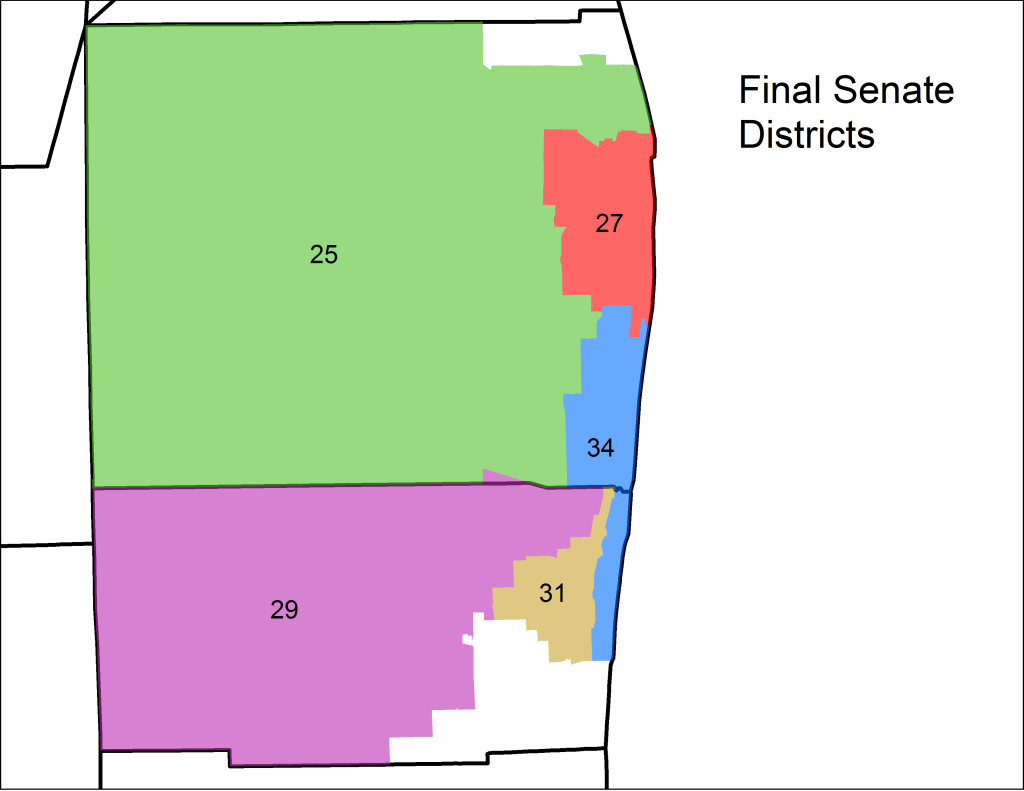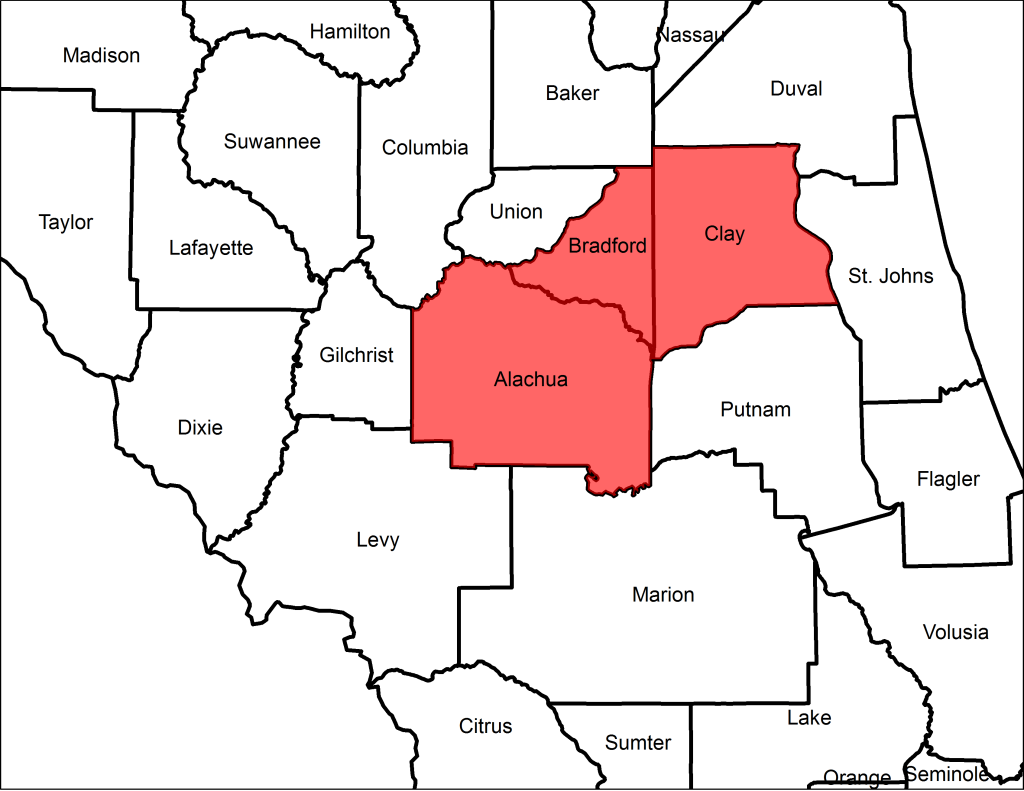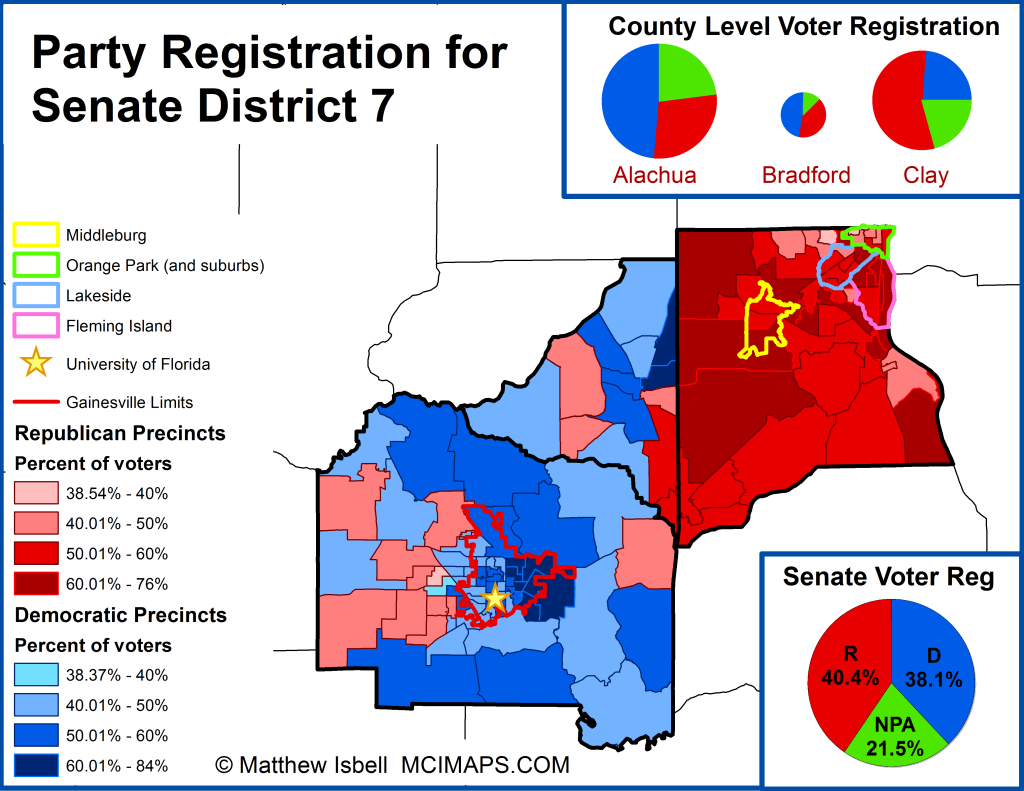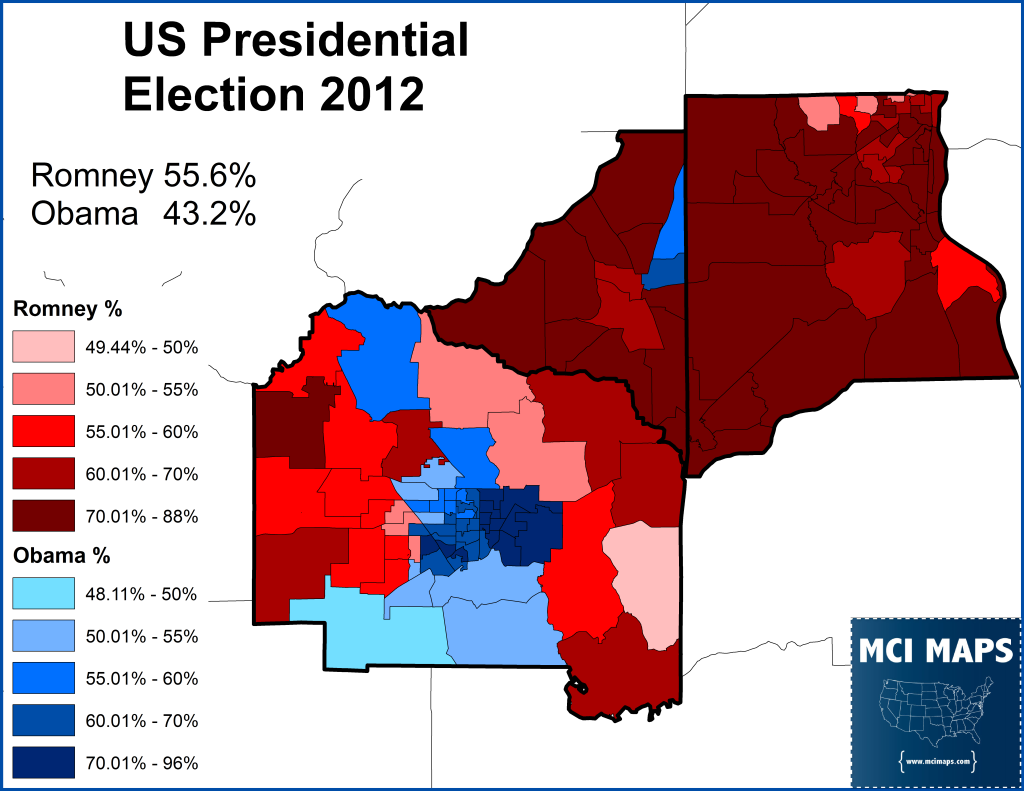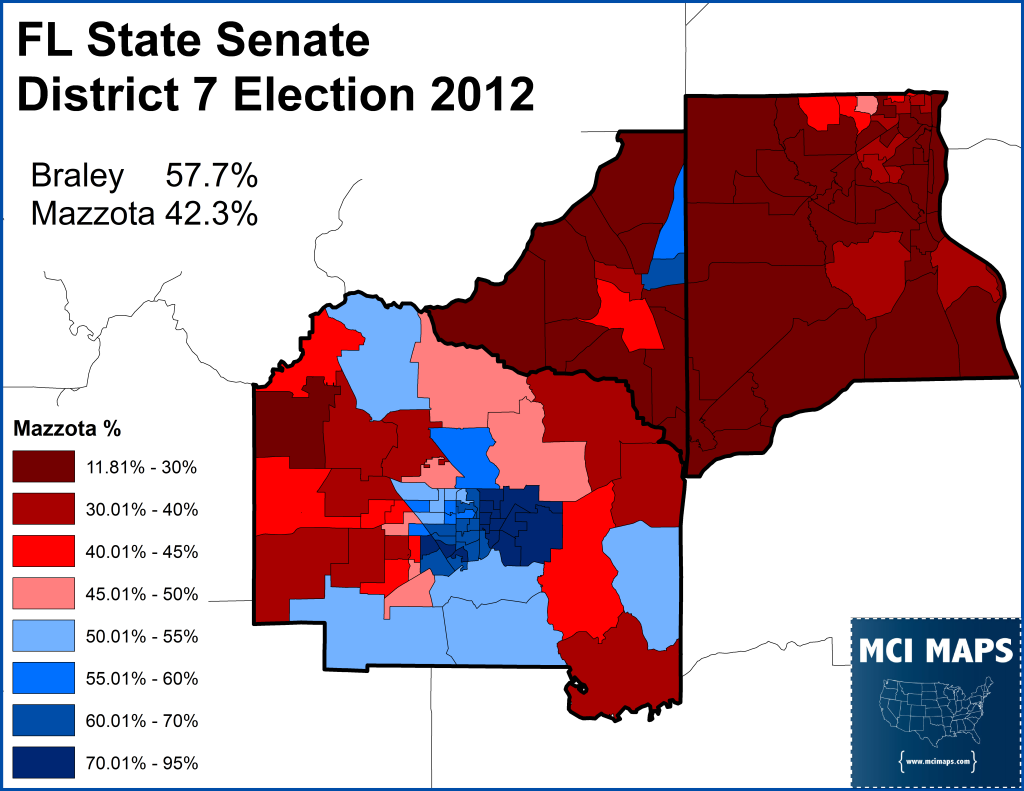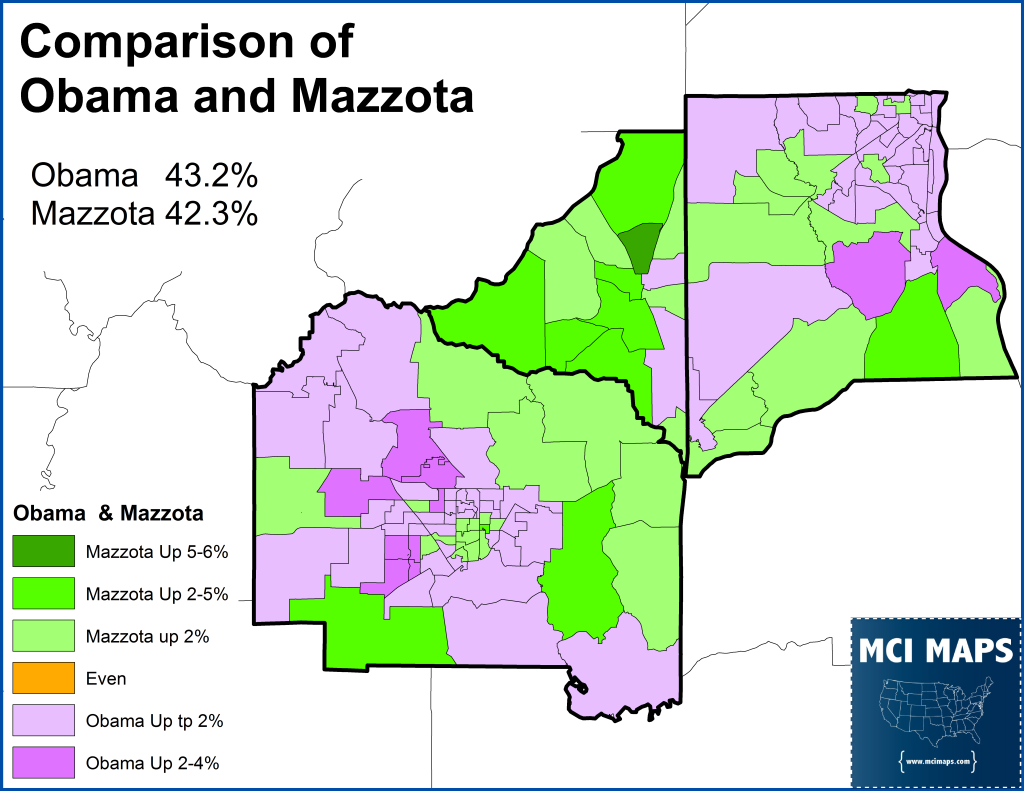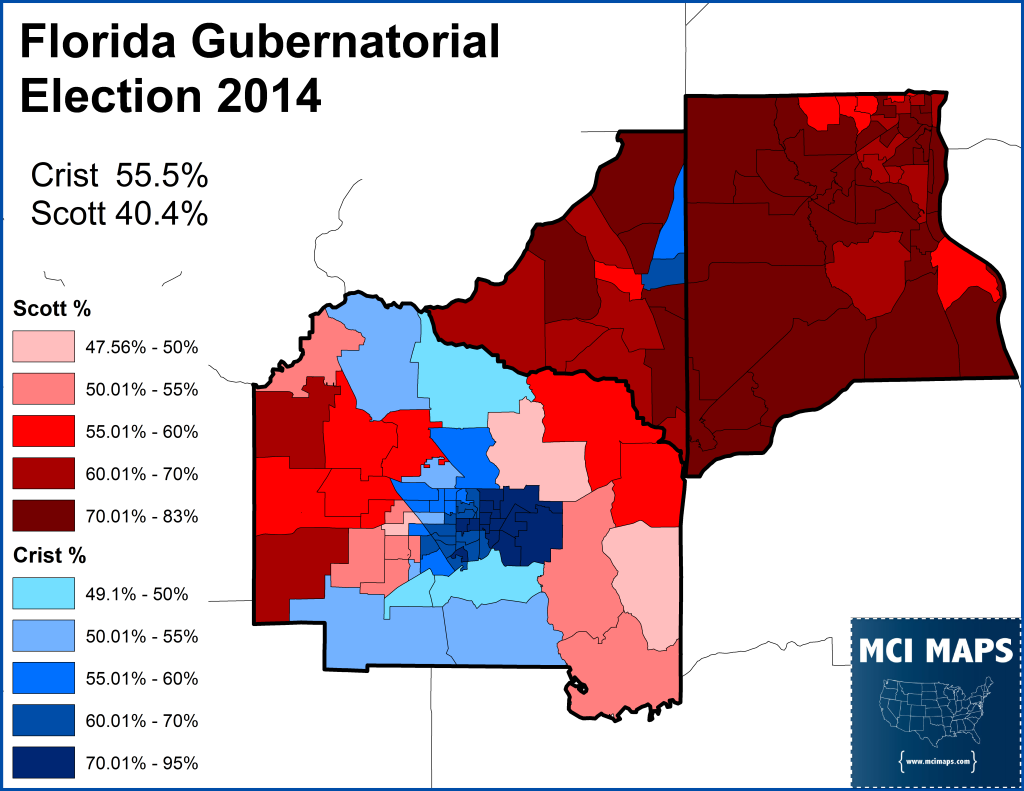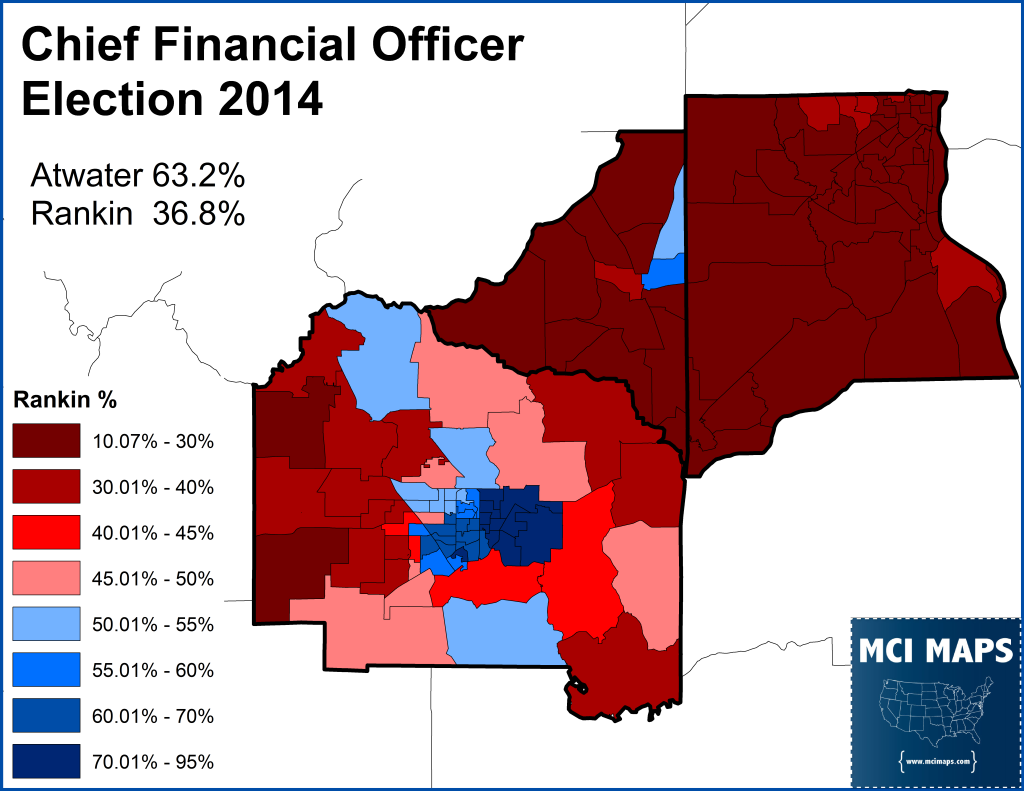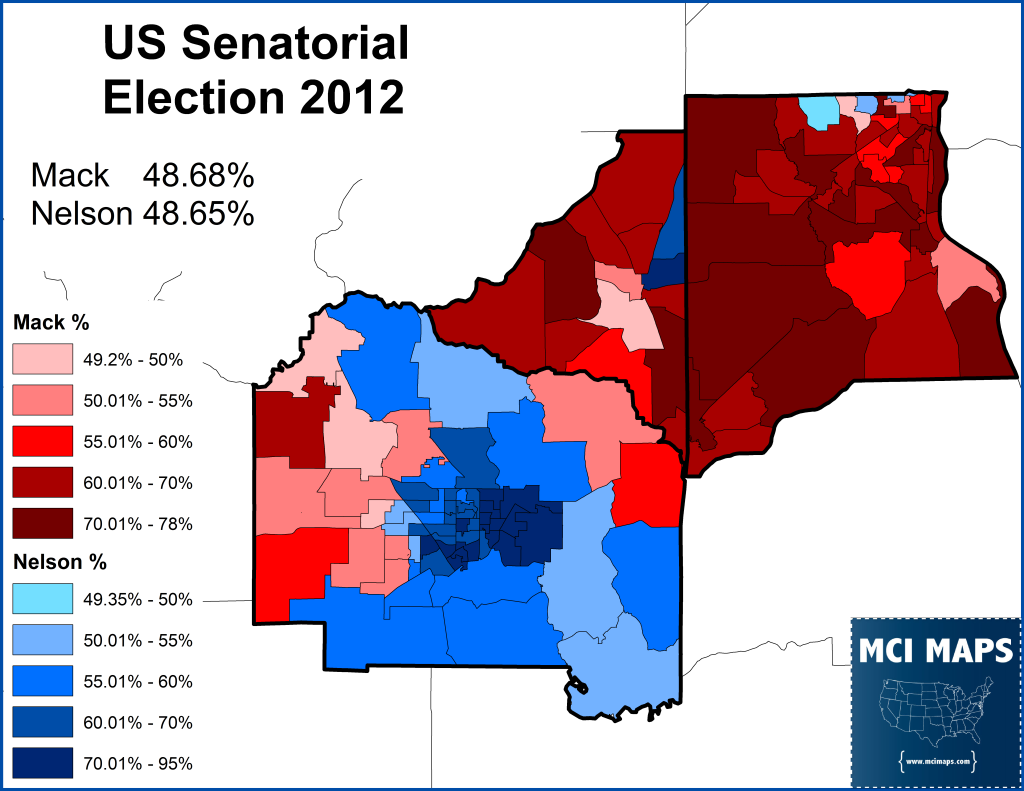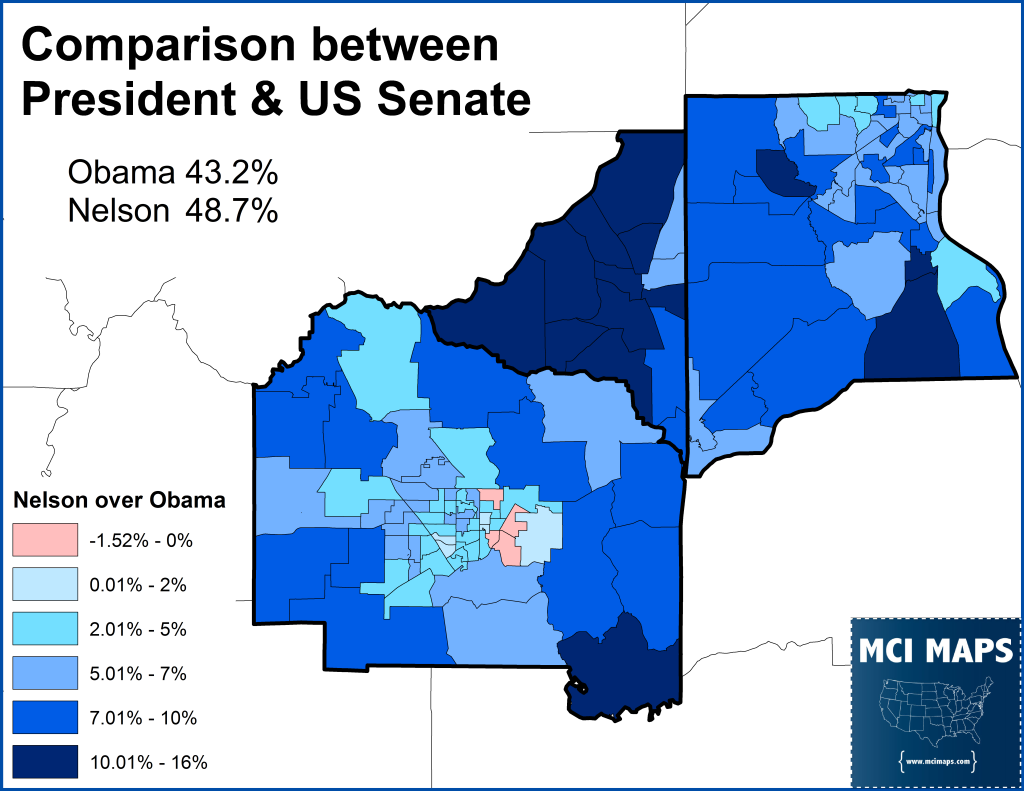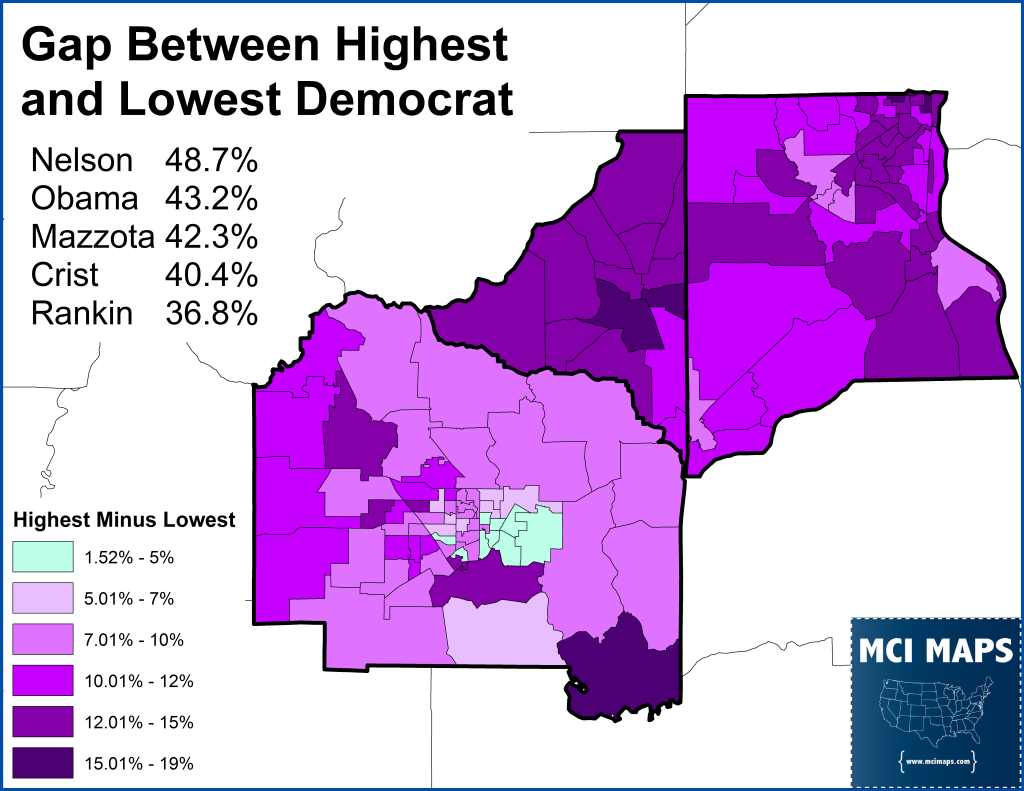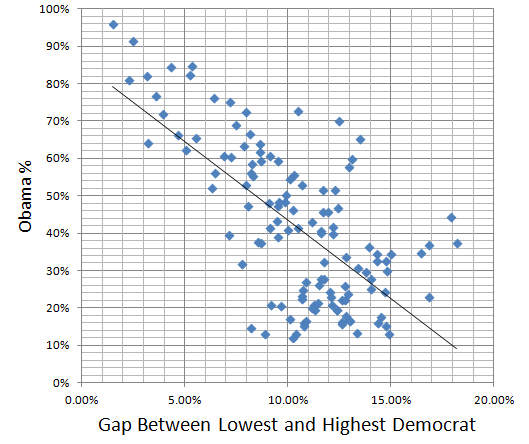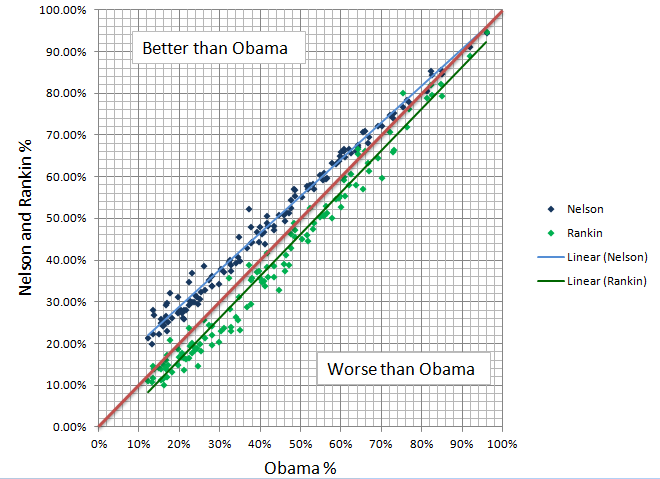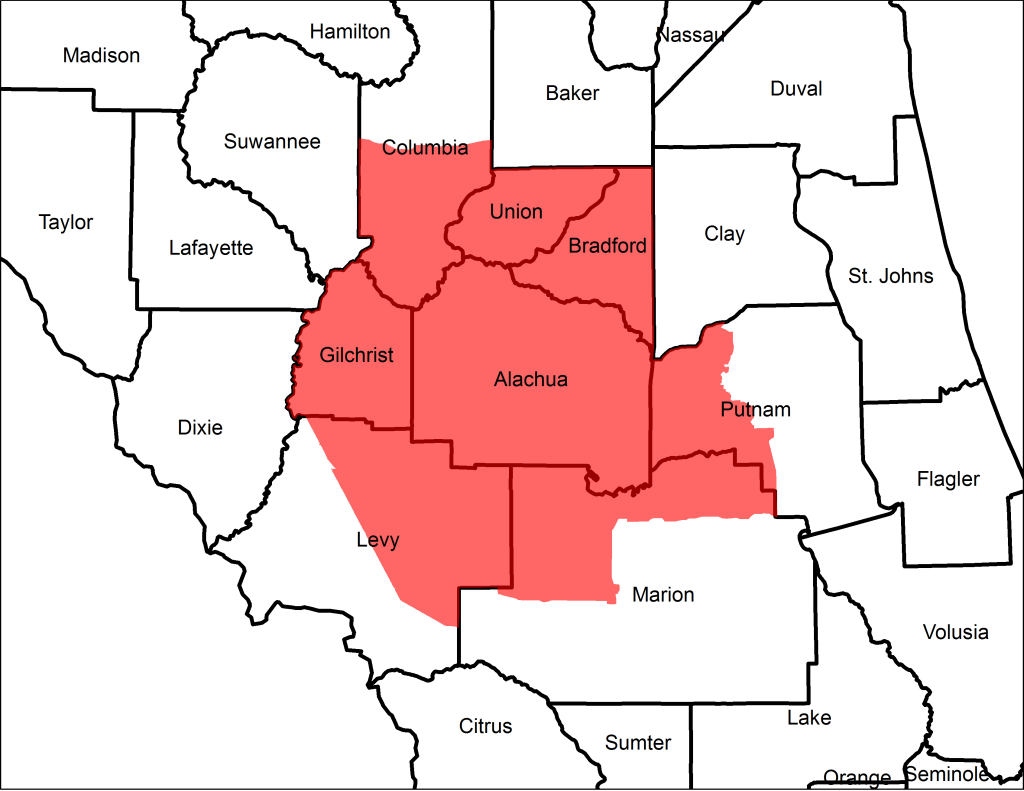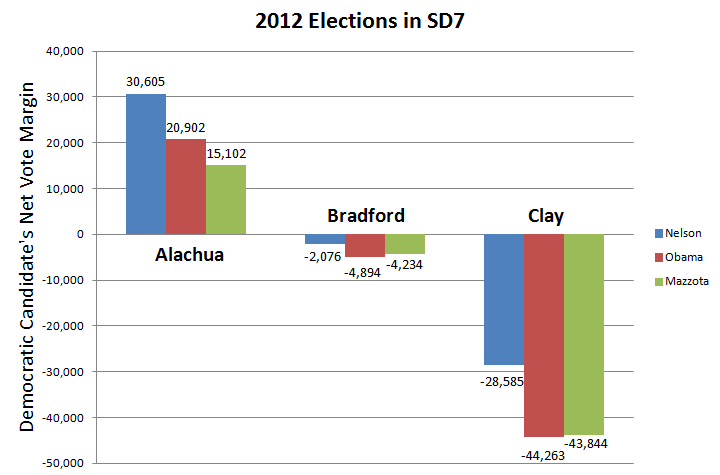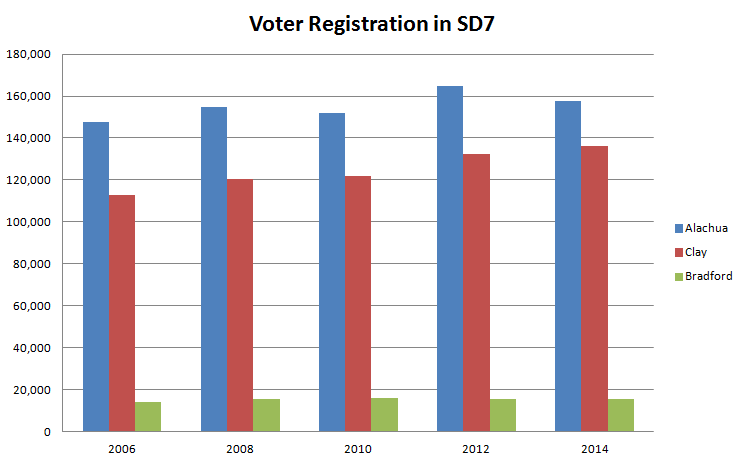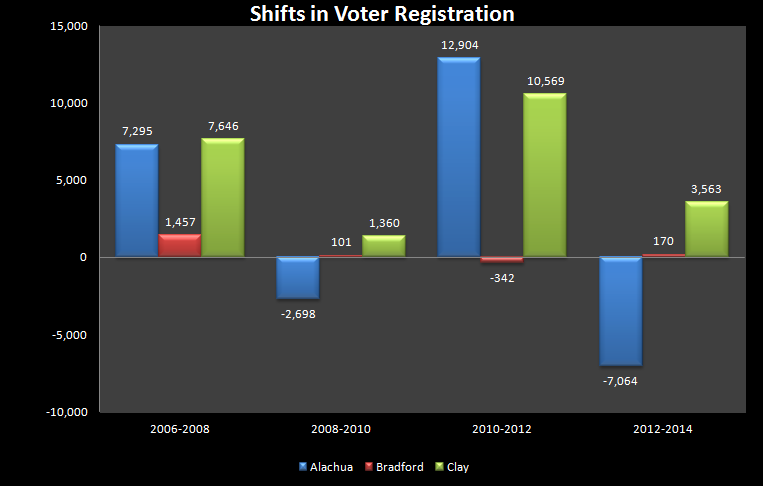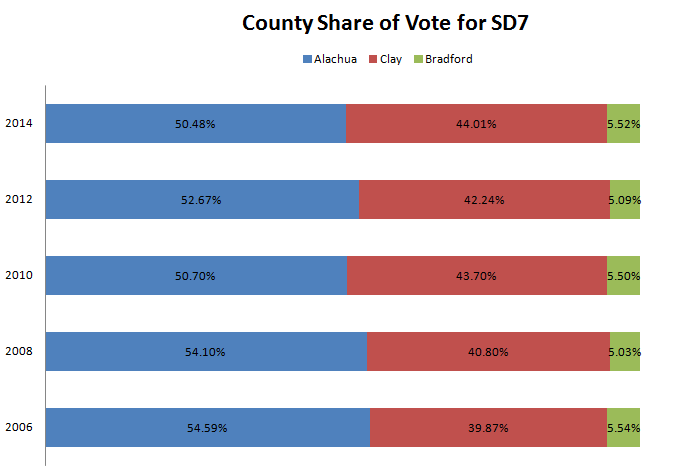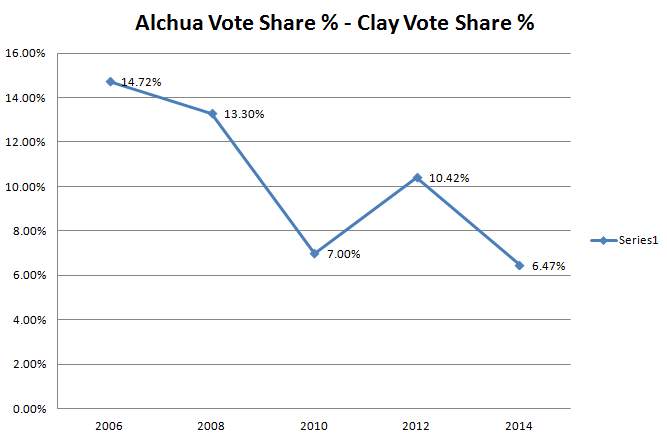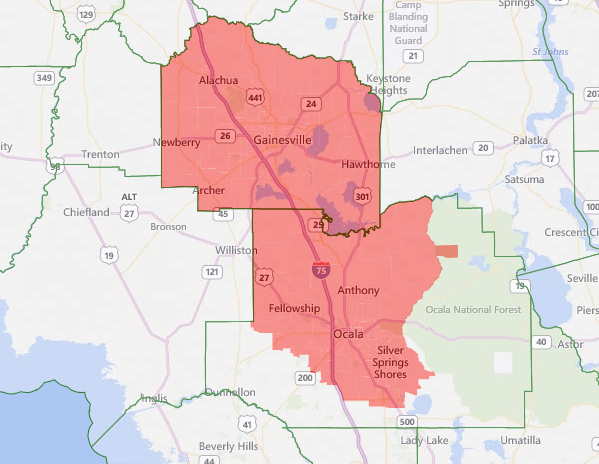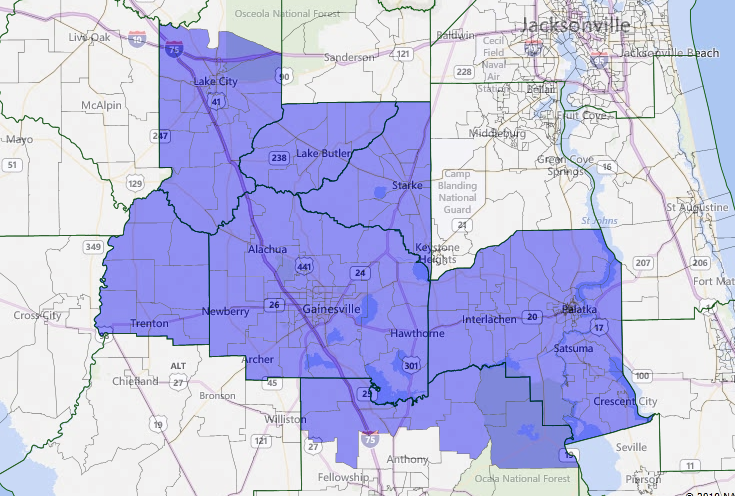Redistricting History
In Florida, a great deal of attention has been paid to the issue of gerrymandering during the 2012 redistricting process. The state has been subjected to lawsuits over its Congressional and Legislative Maps by a coalition arguing the legislature violated new redistricting rules passed by voters in 2010. A lawsuit in the summer of 2014 forced the legislature to alter several of its congressional districts. The changes were small, but the lawsuit opened up a much larger can of worms. Through the lawsuit, the consulting firm, Data Targeting, which has worked with the legislature and Florida GOP, was forced to turn over 500 pages in emails and documents detailing its involvement in the redistricting process of 2012.
In 2010, Florida voters approved constitutional amendments to bar partisanship from factoring into redistricting. Districts were to be compact where possible, not designed to protect incumbents, drawn to protect communities of interest, and be drawn in a non-partisan manor. The Florida GOP did not want these amendments passed. However, once the results were in, they pledged to abide by the rules. However, when the 500 pages of sealed documents from Data Targeting were released, they showed the legislature had used firm to submit maps using average citizens in order to mask the firm’s involvement. Email correspondence showed the firm working to make sure districts kept incumbents in strong districts and to ensure a GOP dominated map. Emails showed the firm intended to keep discussions off email when possible to avoid a paper trail.
The Florida Supreme Court is scheduled to hear the case of the state legislative districts and whether the fair district amendments of 2010 were broken. Meanwhile, the legislature, knowing they have been caught red handed, intend to argue that the fair district amendments were not legal; even though they are in the Florida Constitution.
The Issue of Compactness
One of the main focuses has been the “compactness” of the districts. Florida has been known for winding districts that stretch for miles. When the legislature passed its new redistricting maps, the Supreme Court actually invalidated eight of the forty senate districts for not adhering to the compactness rules. In Southeast Florida, the districts out of Palm Beach and Broward were questioned. Specifically, district 29, which was supposed to be Ellyn Bogdanoff’s district, was thrown out.
The district was designed to save Bogdanoff’s re-election by creating a coastal district that took in GOP communities. However, the State Supreme Court said the district violated compactness rules and a redraw was forced. The final map forced Bogdanoff into a much more compact district, labeled number 34.
The district put Senator Bogdanoff against Democratic Senator Maria Sachs in a member-on-member fight for the seat. With the district more Democratic due to taking in Democratic area’s further off the coast, Sachs won the 2012 election. This as not what Republican leaders wanted. However, the State Supreme Court had forced their hand
The Fair District Amendment’s Compactness requirement put a damper on the legislature’s redistricting strategy. With the legislature’s ability to create odd districts curtailed, except in case of minority districts, many may have thought the resulting maps would be free of partisan intent. However, the legislature, or should we say its consulting firms, managed to create a Republican-leaning map that featured districts much more compact than the map from the last decade. There are several examples of compact districts that were still clearly designed with a partisan intent. I like to call this process Compact Gerrymandering. This article will focus on perhaps the most simple and effective version of compact gerrymandering in the state: Senate District 7.
Senate District 7
Senate District 7 lies in North Central Florida and is made up of just three counties: Alachua, Clay, and Bradford. It is one of just two senate districts to not split any counties.
The district’s shape is reasonable and by keeping three counties contained in one district, lawmakers get to argue they are preserving communities by keeping entire counties from being carved up. After all, the voters of a county have a common interest and want that voting power as strong as possible as a unit. A county has limited power when its voter are split among several legislative districts.
However, Senate 7 is still a prominent example of partisan gerrymandering. The district takes Alachua, a Democratic county that is home to Gainesville and the University of Florida, and pairs it with Clay County, one of the most Republican counties in the entire state. Alachua has slightly higher registration that Clay, however, Clay’s much more Republican that Alachua is Democratic. Bradford rarely decides elections in the district due to its low population size. The Party registration breakdown is below.
Clay County is made up of the Jacksonville suburbs and other high-end communities. The voters there never vote Democratic. Despite being just over 50% Republican, the county rarely gives Democrats more than 30% of the vote; meaning the NPAs vote GOP much more than Democrat. In 2006, Clay was one of only nine counties to vote against Bill Nelson in his landslide re-election. Clay’s voters have little in common with Alachua’s. Alachua is made up of students, African-Americans, white suburbs, and rural whites. Alachua would be better paired with Marion county or several of the rural counties around it. Clay fits better with Duval and St Johns. However, by linking the two counties together via small, rural Bradford, the legislature has created a district that is modestly, but stubbornly, Republican. Bill Nelson narrowly lost the district in his 2012 re-election (while winning the state by double-digits) thanks to Clay’s rigid Republicanism. This district shuts out the voters of Alachua, who can never override Clay’s partisan bent.
I examined several recent elections in the district to get a feel for just how strong the partisan bent is. First, lets look at the 2012 Presidential Election.
While Obama won Alachua with 57.9% of the vote, he lost Clay with 26.7% and Bradford with 28.6%. The dark red of Clay stands out on t
he map.
In that same election, there was an open state senate contest. However Democrat William Mazzota lost to Republican Rob Bradley. The map barely looks different from the Presidential contest.
Mazzota ran into the same problem that Obama did, a big brick wall in Clay county, where he only received 25.8% of the vote. Obama and Mazzota ran fairly close to each-other in most parts of the state. Mazzota managed to over-perform Obama mostly in Bradford.
Unfortunately for Mazzotta, the one place he did better than Obama in was also where the fewest votes came from.
Jumping ahead to 2014, the Gubernatorial race told a similar story for the district. Democrat Charlie Crist lost the district, doing worse than Obama thanks to Clay county.
Crist got 56.4% in Alachua, around 2 points worse than Obama. Meanwhile he got 23.4% in Clay, 3 points worse than the President. Crist did manage 30.4% in Bradford, the one county he improved over Obama in. Crist also suffered from Clay being worth more of the vote than it was in 2012 thanks to turnout disparities in the midterms. Clay was worth 42% of the vote in 2012, but went up to 44% in 2014. With such bad margins in Clay, that slight uptick can make a big difference.
The worst Democratic performance in the district was the CFO race, where Democrat Will Rankin fell below 40% in the district.
.Rankin got 52.4% in Alachua, 25.5% in Bradford, and completely tanked with 20.5% in Clay. Rankin’s results serve as a basement in the district for the last two cycles.
The only Democrat in recent years to come close to winning the district is Bill Nelson. Nelson won re-election by 13 points in 2012. However, he lost the district by 56 votes.
Nelson got 62% in Alachua, 39.5% in Bradford, but only got 33% in Clay. Clay’s Republicanism held despite Nelson’s strong statewide win. Nelson managed to win a few precincts in the county, but still was crushed in much of the area. Clay’s Republicanism kept Nelson down enough to just narrowly lose the district.
Back in 2006, Nelson won the district thanks to improved margins in Alachua and Bradford. However, even in the 2006 landslide that saw Nelson get 60% statewide, the Senator only managed 38% in Clay.
In 2012, Nelson got close to winning because he over-performing Obama across the district. Nelson’s gains were weakest in Alachua and strongest in Bradford. Nelson did 4 points better in Alachua, 6 points better in Clay, and 10 points better in Bradford.
Alachua may be Democratic, but it is not elastic enough to give Democrats the large margins they need to win the district. While recent Democrats peak at 62% in Alachua, they crater to 20% in Clay. Clay is actually more elastic than Alachua, but in a bad way: giving Democrats margins from bad to terrible. Nelson’s 06 win (and 38% in Clay) is a fluke caused by a disastrous Republican opponent. Nelson’s 2012 percentage of 33% in Clay is the best the party can hope for, and with Alachua not willing to break higher than low 60s, winning the district is extremely unlikely.
Elasticity in the District
For a Democrat to win SD7, they would need to run ahead of the President. Any winning Democrat would have to be a moderate that could win over rural voters and Republicans even while they vote Republican for other races. Too see if enough of these voters exist in the district, I took at the look at the elasticity (the willingness to cross party lines) of the district. Looking at the results for the five elections examined above, I examined each of the five Democrat’s precinct results and mapped the gap between the lowest and highest performing Democrat in each precinct.
As the map shows, the precincts in Alachua often see the lowest gap between the best and worse performing Democrat. Clay and Bradford have the biggest gaps. In most of these instances, the gap is caused by Nelson doing much better than other Democrats. However, Nelson is still badly losing most of these precincts. The precincts that performed best for Democrats have some of the weakest elasticity. The scatter-plot below shows precincts by their percentage for Obama and the gap between the worst and best performing Democrat.
As the plot shows, as precincts become less favorable toward Obama, they generally have a greater gap between Democratic candidates. Now this can mean some Democrats managed to run ahead of the pack (like Nelson). However, it also means other Democrats (like Rankin) fell off even more in dark red territory. Meanwhile, strong Obama areas (60%+) did not give a strong Democrat like Nelson a much higher share of the vote.
The scatter-plot below shows how Nelson, the strongest performing Democrat, and Rankin, the weakest performing Democrat, compare to Obama’s percent of the vote. The red line signifies a perfect correlation (same percent).
As the plot shows, Rankin runs worse than the President in most precincts while Nelson runs ahead. However, the gap between Rankin and and Nelson is highest in the least Democratic areas. In the heavily GOP region, Nelson is able to run higher than Obama while Rankin runs worse. Rankin stays below the President as precincts become more supportive of the President while Nelson’s advantage narrows. By the time we reach the precincts with the strongest Obama percent, Nelson is barely doing better than the President, all the while Rankin still trails. So what does this mean? It means that while a weak Democrat like Rankin can do worse than the President in a very dark red part of the district, a strong candidate like Nelson cannot do better than the President in heavily Democratic territory. Therefor, there is limited room to improve but always room to do worse. This is not unique to just District 7. In general, some of the most Democratic areas have limited elasticity because they are heavily African-American, and already have voters casting straight-Dem ballots. In some of the most Democratic areas, there are simply too few swing voters for someone like Nelson to get. Therefore, a moderate candidate like Nelson would need to wrack up even stronger improvements in red territory; most likely moderate white suburbs or rural ancestral Democrats. Bradford, an ancestral Democratic territory, has the right type of voters to carry this feat. Bradford, like many rural counties in the state, is still Democratic at the local level and has voters willing to split tickets and vote for a Democrat they like; even while giving Democratic candidates for President very little support. Despite losing Bradford, Nelson did 11% better than Obama did in 2012. However, the problem is that Bradford is too little of the vote, often around 5% of ballots cast. Nelson only managed to do 6% better in Clay and 4% better in Alachua, were most of the vote takes place. Clay is not going to provide the level of ticket-splitting that a moderate Democrat needs to win SD7, making a Democratic win there almost impossible.
Before redistricting, the Senate district based out of Alachua, then District 14, was a swing seat. The district had narrowly voted for Obama in 2008 but voted GOP on other occasions. The old district boundaries can be seen below.
The key to the district’s swing nature was that it paired reliably blue Alachua with several rural ancestral Democrats. The voters of the surrounding counties are largely Democratic in registration and vote Democrat at the local level and largely Republican at the top of the ballot. However, Obama could muster some votes out of these areas and candidates like Nelson could improve on Obama’s margin by a significant amount. In 2012, Obama would have lost the district with 47.8%. Nelson would receive 54.5% thanks to major improvements over Obama in the rural counties. The key to that district being in play is the lack of Clay and the inclusion of the rural counties.
Clay was willing to give Nelson better marks than Obama, but only by a few points. The county’s suburban Republican voters are brick wall for Democrats, even for moderates like Nelson. There is no Democrat I can think of who can break that brick wall in Clay.
The Growing Problem of Clay County
Clay’s strong Republican lean makes any race in SD7 a fight between it and Alachua. The bar graph below shows the Democratic candidate margins for the three main elections in 2012 (President, US Senate, and State Senate). Democrats rack up huge margins in Alachua, lose in small Bradford, and shed tens of thousands of votes in Clay.
For Obama and Mazzota, the problem was was they lost Clay by more votes than they won Alachua, despite the fact Alachua cast more votes than Clay. Nelson’s race was the one instance were Bradford decided the election. Nelson actually managed to win 2,000 more votes in Alachua than he lost in clay. However, by losing by just over 2,000 votes in Bradford, he narrowly lost the district. Nelson got close to winning by severely cutting the number of raw votes lost out of Clay. While Nelson netted 10,000 more votes than Obama in Alachua, he also lost by 16,000 less votes in Clay.
The problem for Democrats, though, is that Clay is likely to become a larger share of the vote than Alachua with time. Clay’s voter registration has been slowly increasing over the last eight years at a faster rate than Alachua.
Since 2006, Clay’s voter registration has increased from 113,000 to 136,000, an increase of 23,000 voters. Meanwhile, Alachua has gone from 147,000 voters to 157,000, an increase of just 10,000. Bradford, meanwhile, has hovered around 14,000 to 16,000 the entire time.
One of the problems for Alachua is that the student population of UF comes and goes, causing wild fluctuations in its registration. In some years Alachua has actually fallen in registration as students graduate and move on while newer recruits are not registered to the county quick enough. The bar graph below shows increases or decreases in voter registration over two year intervals since 2006.
Alachua saw increases in registration heading into Presidential years and then saw drops in the midterms. No doubt part of this was OFA in 2008 and 2012 registering students and then midterms not seeing as much of a well-funded effort to update the registration of UF students who arrived in midterm years. Clay saw its biggest registration increases in Presidential years. However, before anyone thinks those gains were because of the Obama campaign, it should be noted almost all gains from 2010-2012 were from Repiblicans or NPAs and gains from 2006-2008 were more Republicans than Democrats. Alachua relies on gains from students who eventually leave while Clay’s gains last; giving Clay a strong likelihood of eventually passing Alachua in registration.
In addition to registration gains, Clay has been slowly increasing its share of the vote in the district.
The bar graph above shows each counties share of the vote. Alachua still has the largest share, staying above 50% in 2014 while Clay contributed 44%. However, going back to 2006, Alachua had a higher share while Clay’s share was just under 40%. The gap is slowing narrowing. While Alachua increased in 2012, it fell back down in 2014, below 2010 numbers. Bradford, meanwhile, always hovers around 5%.
If we were to subtract Clay’s vote share from Alachua’s to see the gap, we see that the gap has narrowed with recent elections.
While Alachua managed to improve the gap in 2012 after a huge drop in 2010 (thanks to bad turnout in Alachua), the 2012 gap is still lower than 2008 Presidential and the 2006 midterm. As Clay’s registration grows, strong Presidential turnout in Alachua will not be enough to keep the gap high. I expect to see the gap continue to narrow with more elections. The 2016 gap will probably be higher than 2014, but it won’t be as high as 2012.
With Clay slowly but surely creeping up on Alachua in registration and vote share, Democrats will only have a tougher time winning the district.
Possible Replacement Districts
The current boundaries of Senate District 7 are problematic in two ways. First, they are designed to ensure a Republican Senator. The legislature knew of Clay’s steadfast Republicanism when they pared it with Alachua and knew the effect it would have on elections. The other issue is that the district matches two communities very different from each other. A suburban county like Clay fits in better with St. Johns or Duval. Alachua fits in better with Marion County (home to Ocala) to the south. In fact, it is easy to create a Senate district that links Gainesville to Ocala.
Such a district shares much in common, linked by small communities and I-75. Ocala and Gainesville would be the two main population centers of the district; with a Senator able to come from either area (most likely a Gainesville Democrat or Ocala Republican). This would be a swing district that gave Obama around 50.7% of the vote and Nelson 56.5%. The moderate suburbs of Ocala give moderate Democrats like Nelson the ability to run up a much stronger win that Obama does, giving Democrats plenty of opportunity to win the seat.
Another possible district continues the tradition of the old 14th, pairing Alachua with rural counties. Alachua is fairly rural outside of Gainesville and its not crazy to pair it and other rural counties together.
In this case I try to split less counties, putting all of Putnam in and leaving Levy out. Rural Marion gets added to even out the population and I leave sparsely populated Northern Columbia county out to be added to Baker or Hamilton counties. This district would be influenced mostly by Alachua but give a Putnam politician a chance. Like the old 14th district, it is a lean GOP swing seat that gives Obama 47% and Nelson 54%. In this case, improving margins in the rural areas is key to victory for any moderate Democrat.
Conclusions
Regardless of what replacement district is offered, the fact is the current district screams of partisan intent. The legislature, through its consulting firm, drew a district linking a moderately Democratic region to a hyper-Republican county to ensure no Democratic Senator came out of Gainesville. The Jacksonville Suburbs of Clay County and the city of Gainesville have nothing in common are are not linked in any way except for the Senate District. The goal is clearly to ensure a Republican seat; and that goal is achieved by putting a college town with one of the most Republican counties in the state. The district serves as an important reminder that not all gerrymandering looks like it was drawn by a five year old. Some of the cleanest looking districts can also have the most partisan of intentions.

